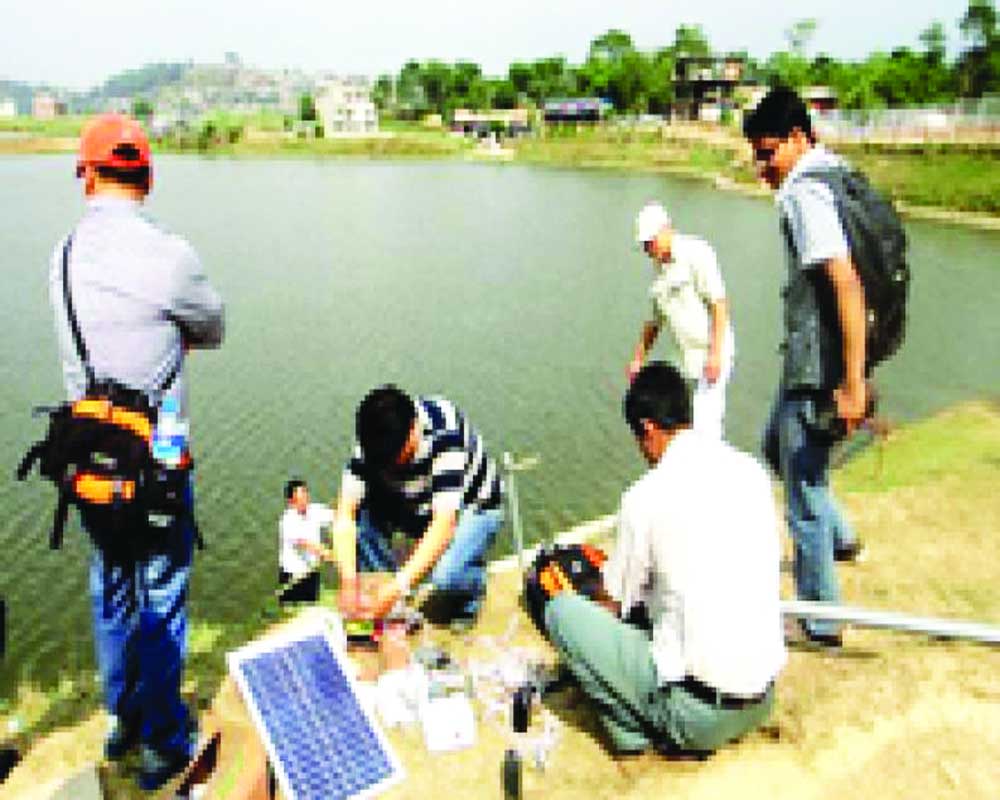It is a matter of concern that India’s EWS system is not of cutting-edge technology. It’s time for us to upgrade this technology, which can not only minimise the loss of lives and property but also provide employment
A combination of climate change and extreme weather events has led to spiralling instances of cyclones, which are now frequenting India’s coastlines regularly. These events have now become a norm and part of the daily lives of the people living in affected parts of the country. The damages caused by such events are now impacting local economies of the coastal cities, towns and villages. Cyclones cannot be curtailed but one can get a fairly definitive idea of their pattern of occurrence and the next possible landfall location with help from early warning systems (EWS).
According to a study published in the Science Direct Journal, investing in EWS to forecast cyclones can save six times more life and property by preventing damage. EWS tools can be invested upon to equip the local, regional and national institutions to predict extreme weather events and their approximate location with a firm view to minimise loss of life and property. In fact, EWS technology has evolved quite a lot today, with satellite-based data being available and interpreted. It gives an almost accurate positioning of the approaching cyclone, its speed, trajectory and many other parameters.
While investment in EWS has shown evidence to save lives and help protect property, most preventive measures focus on critical infrastructure to prevent disasters such as flood-control systems, strengthening building codes, construction of shelters and protecting environmental buffers. This because there is a lack of understanding on how to measure effectiveness that leads to limited investment in EWS. Moreover, calculating the benefits of an EWS is complex and limited due to its limitations on methodology, modelling and data. There is an urgent need to increase the technological expertise and prowess pertaining to the latest EWS.
The report in Science Direct Journal was conducted by a team headed by Bapon SHM Fakhruddin, technical director at Tonkin, Taylor International from New Zealand. The study used the cost-benefit analysis (CBA) tool to summarise the value for money in terms of investment to enhance EWS. The results of the study were interesting as they proved that advance warning of impending tropical cyclones can facilitate planning and preparation against cyclone events and bring great socio-economic benefits. Investing money to enhance an EWS can, thus, aid in disaster risk reduction, the report found.
In other words, as per the study, for every $1 invested in EWS, there is a return of $6.0 in benefits. The team conducting the survey used a case study on Cyclone Evan in Samoa, an island nation in the South Pacific Ocean. Samoa comprises two large volcanic islands of Upolu and Savai’I, and is extremely prone to natural hazards that are usually influenced by climate change such as sea-level rise, tropical cyclones and earthquake-generated tsunami. Cyclone Evan hit Samoa in December 2012 and caused immense damage and significant losses, estimated to be $103.3 million.
Using CBA tool, the team first considered the quantification of benefits of EWS and then calculated the cost of the services.
The estimated 10-year system cost ($3.1 mn) and estimated damage reduction ($8.43 mn) was used in a probabilistic analysis to understand the expected net benefits (for 10-years) of having this improved weather forecasting system in place. The study also found a forecast error probability of 10 per cent with the system. Despite the limitations, the study considered CBA to be a reliable means of assessing the benefits of early warning systems.
The report focussed solely on justifying the economic benefits of investing in risk reduction, rather than offer theories on the impacts of future disasters.
It also found that 81.45 per cent of all losses and damages caused by Cyclone Evan could have been avoided if efficient and strong EWS had been implemented in Samoa at the time of impact. But these unfortunate events serve as lesson from which countries with long coastlines like India must learn. It is a matter of concern that India’s EWS is not of cutting-edge technology. It is high time that the same needs thorough upgradation. India must factor in the rapidly increasing frequency of cyclones and assess the damage being done to the economy. Many parts of Odisha, for instance, are yet to emerge from the economic debacle of the recent cyclone Fani. The cost of a superior EWS — even if it is expensive — will always be beneficial in the long-term as the combined cost of infrastructure damage and cost of rebuilding the same in addition to the loss of life is almost too high a cost as compared to the cost of acquisition for a sharp EWS technology.
India can make sure that technology is transferred from other nations so that the EWS can be developed indigenously under technology transfer agreements. This will provide employment and lower the cost as well. In the future, climate change will make it difficult to predict the weather. An effective EWS will be the only method to forewarn us about the impending wrath of cyclones-much before they hit.
(The writer is an environmental journalist)


























